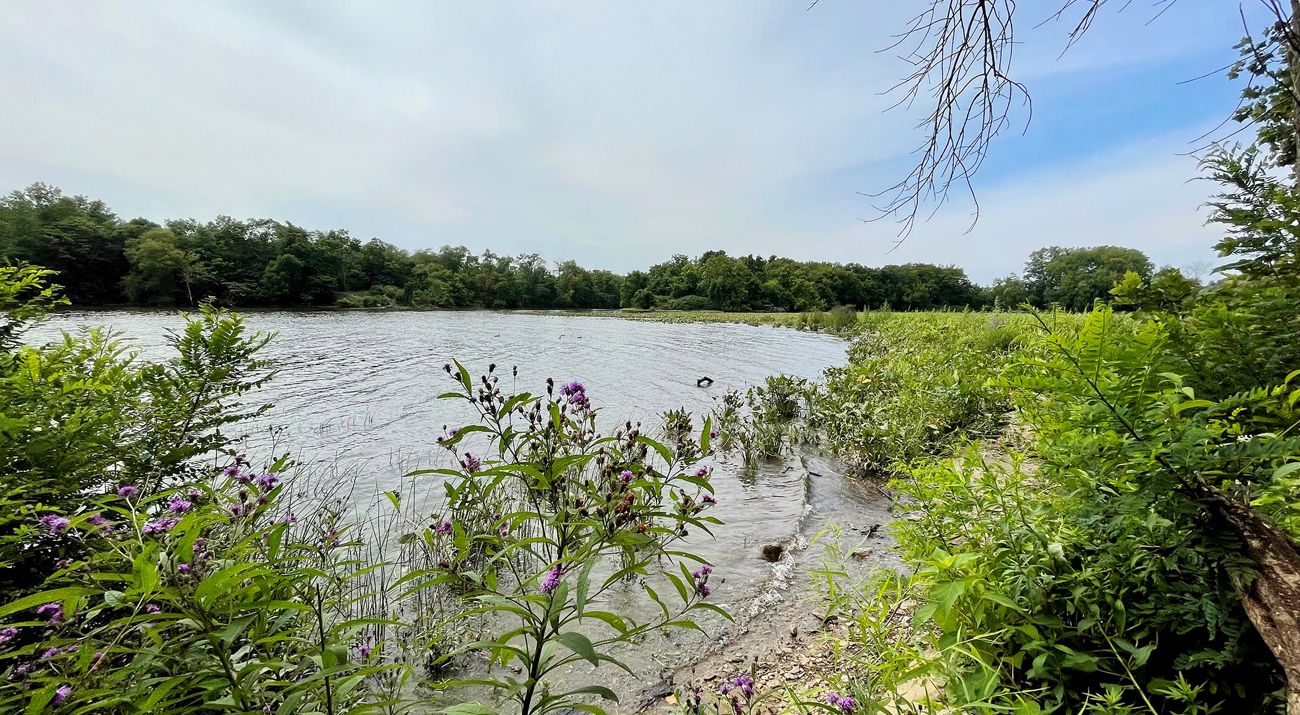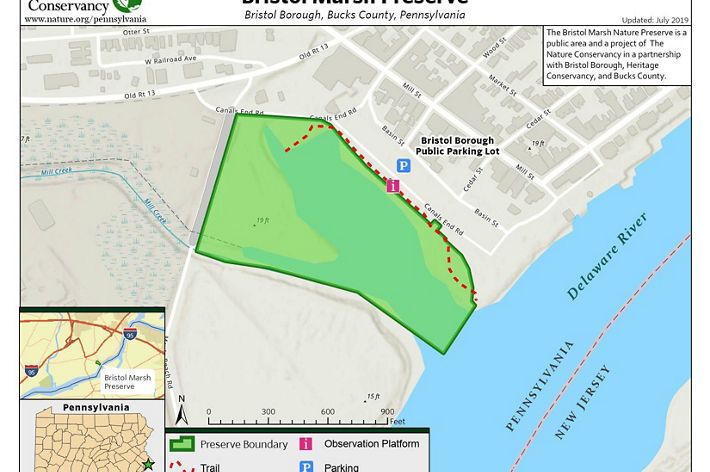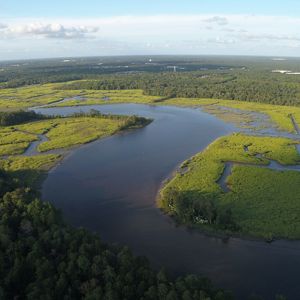Description
Freshwater tidal marshes were never widespread in the mid-Atlantic region, occurring mainly along the banks of large rivers such as the Delaware and its tributaries. Since the arrival of William Penn, these fragile yet highly productive habitats have been all but eliminated by riverfront development. Bristol Marsh is the best remaining example of this vanishing natural community in Pennsylvania.
The preserve is open to the public for nature study and to raise awareness about the critical importance of wetland habitats. Viewing platforms and a nature trail with interpretive signs make this preserve ideal for visiting school groups. The nearby Silver Lake Nature Center also offers guided walks to the marsh.
Although the marsh is small and surrounded by commercial development, six rare plants native to the Delaware River tidal marshes thrive here. Dependent on daily tidal flushing, these and other highly specialized wetland plants, nearly extirpated from Pennsylvania, comprise part of a marsh ecosystem that functions as a nursery, pollution filter and water purifier for the Delaware River.
In 1986 The Nature Conservancy secured a long-term conservation management agreement with Bristol Borough on 11 acres of marsh. Rohm and Haas Company donated a conservation easement to TNC on seven acres of adjacent land, now owned by Dow Chemical, which ensures that the marsh will be well buffered from disturbance. Many conservation-minded organizations and individuals have worked together to preserve this highly significant wetland, including the TNC’s work with the Heritage Conservancy on management and restoration projects that will keep this area intact for future generations to enjoy.






